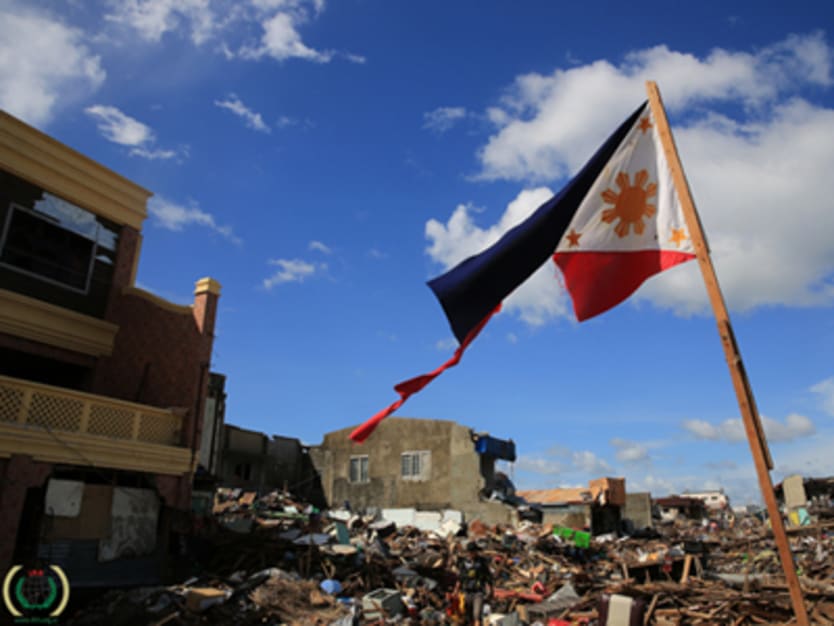
It’s exactly 104 days after Haiyan, one of the world’s strongest typhoons ever recorded, hit the Philippines, killing over 6,000 people and destroying billions in properties. But progress travels at a snail’s pace.
In the most devastated areas in the Visayas region, people are still languishing in hunger, lack of shelter and insufficient support despite the outpouring of aid from the international community. The plan is to provide the people a long-term solution for getting them back firmly on their feet while making sure foreign aid does not go to waste — a monumental task the government claims to be on top of.
To effectively monitor disaster aid expenditure to ensure money is spent wisely and disaster victims benefit the most, the Philippine government is planning to put up an online ticketing system, in partnership with the World Bank, to map out the procedures and steps where Haiyan aid and expenditure goes, how it is spent, and who approves and releases the funds, to boost transparency and accountability in disaster efforts.
“We’re envisioning a ticketing system [for disaster efforts] because right now the process is not that visible, not that transparent,” Richard Bon Moya, budget undersecretary and chief information officer, told Devex. “When people ask for money during calamities, there’s a lot of process and we want to let them know that.”
This is part of the government’s efforts to promote transparency, accountability, and capacity development in disaster agencies following successive calamities that struck the Philippines last year. Among the initiatives are the online foreign aid transparency hub that tracks aid pledges for Haiyan efforts and the finance department’s proposal to have a multi-donor trust fund in partnership with the World Bank and the Asian Development Bank.
Over $8.5 billion will be needed to fund the overall reconstruction plan. As of posting time, the government has so far released around 5 percent of the needed amount or over $400 million. This is on top of issues of broken promises from the international community, with only 20 percent of cash pledges or $13.3 million actually in the state’s coffers.
Policy lessons
Moya explained that the planned ticketing and monitoring system will eventually cover both public and private sector efforts — although in legal terms, local and international NGOs are not “compelled” to disclose how they spend money or the donations going directly to them.
“That should be a policy lesson moving forward,” he said.
Given the extreme vulnerability of the country to natural calamities, the government official said the plan is geared for the long-term and will ideally become an “institutional mechanism” that can address procedural issues in future disasters.
“[It] covers both the public and the private sector,” Moya said. “We are coordinating on how we can synergize the efforts. This planned system is not just on Yolanda but other disasters in the future. The system will become an institutional mechanism to tracking reconstruction efforts and expenditure. We’re focusing our system to have a tighter view of reconstruction expenditure.”
The transparency and coordination issues stem all the way back from the first few days following the calamity, with the general public clamoring for more transparency and engagement in the process. This is why the government is stepping up in pushing these platforms, Moya explained.
“Most of the time, what people are concerned about is the execution of the budget but the bottlenecks usually happen just before that. The new system is for the long-term and monitors the implementation process,” he noted.
The cabinet official explained that the government is mulling the idea of calling the new platform Haiyan and Other reconstruction Portal of Expenditures (HOPE), a catchy sequel for the online foreign aid transparency hub or FAITH. But whether the new initiative will indeed spark hope and action will be tested once it gets launched in the middle of the year.
Local ownership
Another issue Moya discussed is local ownership, wherein aid money goes through a single government channel for better and efficient monitoring — like what is currently happening in Nepal with a proposal for a new foreign aid policy.
But should the Philippines follow the same path? For Moya, it is not a walk in the park as there are other complicated issues that should be factored in.
He noted that calamities and disaster efforts should be distinguished based on the urgency of the need and the scale of the damage, or immediate relief and rescue vs. long-term rehabilitation
“The immediate relief and rescue, the primary objective is to save as many lives as we can and sometimes, government being government is not exactly the fastest modality,” he explained. “If we insist on that, the people are dying already and the government is yet to release funds. We have to calibrate that.”
Moya added: “The good thing about the common government channel is you have a hand in monitoring the funds,” he said, pointing out that the government is also planning to put up a multi-currency, multi-donor trust account so international donations can be easily disbursed.
Read more development aid news online, and subscribe to The Development Newswire to receive top international development headlines from the world’s leading donors, news sources and opinion leaders — emailed to you FREE every business day.
